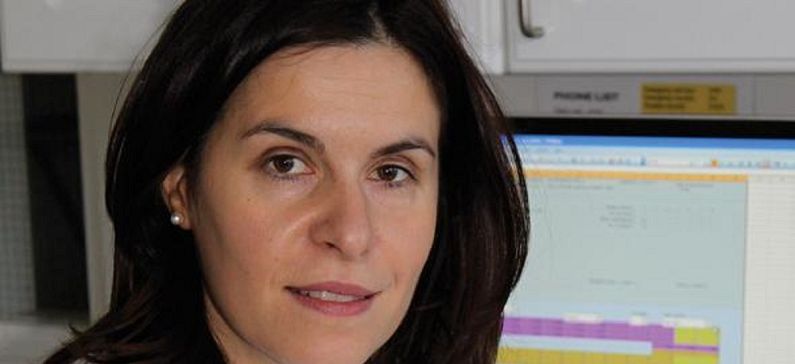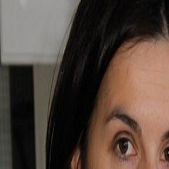
Focuses her research in the development of fibre network materials
Athina Markaki is a Reader in Engineering Materials at the University of Cambridge. She focuses her research in the development of fibre network materials and the control of their shape with magneto-mechanical actuation, using ferromagnetic fibres. This effect is being explored for biomedical applications, including magnetically active layers on the surface of prosthetic implants, which deform elastically on application of a magnetic field, stimulating in-growth of bone tissue via the creation of mechanical strain on the cell network, and hence improving the bonding between prosthesis and bone. She is also one of the Cambridge scientists who created artificial bile ducts.
Athina Markaki studied Metallurgical Engineering at the National Technical University of Athens and earned her PhD in Materials Science from the University of Cambridge.
In 2009 she was awarded a €1.5 million grant from the European Research Council (ERC) to set up a 5-year research group under the ERC’s ‘Starting Independent Researcher Grant’ programme. Athina’s project aimed to improve the life span of prosthetic implants such as hip replacements. Bone is an active material, it responds to stresses and strains. In the absence of straining (this is also known as “stress shielding”), bone adjacent to implants can become unhealthy, contributing to loss of adhesion. The idea proposed in Athina’s project was that the implant should have a highly porous surface layer, made by bonding ferromagnetic fibres together, into which bone tissue growth would occur. During the post-operative period, application of a magnetic field will cause the fibre network to deform elastically, as individual fibres tend to align with the field.
“Naturally, I was very happy to hear that my proposal had been accepted”, Athina says. “The EU funding will enable me to build a group of students and post-docs to share in this exciting project. I certainly enjoy this type of research immensely and I would like to do this while carrying out research of real potential benefit for society.”
In 2017, she was part of the team that created artificial bile ducts. More specifically, the scientists led by the Greek researcher Fotios Sampaziotis, developed a new method for growing and transplanting artificial bile ducts that could in the future be used to help treat liver disease in children, reducing the need for liver transplantation. The researchers grew a 3D cellular structure which, once transplanted into mice, developed into normal, functioning bile ducts. Bile ducts are long, tube-like structures that carry bile, which is secreted by the liver and is essential for helping us digest food. If the ducts do not work correctly, for example in the childhood disease biliary atresia, this can lead to damaging build of bile in the liver.
She has received multiple awards such as the European Research Council (ERC) Starting Grant, the Advanced EPSRC Fellowship, the De Montfort Award at “SET for Britain” (Supporting Britain’s Younger Scientists, Engineers & Technologists) National Event (2004), the Young Scientist Prize 2003 for the best oral presentation (5th Euromech Solid Mechanics Conference ESMC-5), and awards from the State Scholarship Foundation, the Evgenidio Foundation and the Technical Chamber of Greece for academic excellence.










Κων/νος Δόγκας
-10/05/2020 11:35 am
Χαίρομαι καί συγχαίρω τή Δρ Αθηνά Μαρκάκη γιά όλα τά υπέροχα πού έχει πετύχει. Είμαι τυχερός πού τή γνώρησα καί είμαστε κάποτε φίλοι. Εγώ θά τή θυμάμαι πάντα. Τής εύχομαι από καρδιάς τό καλλίτερο. Πρώτα υγεία,ευτυχία καί δύναμη. Πίστεύω ότι η ενασχόλησή της μέ ” τά βιοιατρικά ” θά κάνει τή ζωή κάποιων πολύ ποιό εύκολη. Ξέρω ότι αγαπάει πολύ τά παιδιά καί θά έκανε πάν γιά τήν επιτυχία τού προγράμματος ετών ” χοληφόρων αγωγών”🥀